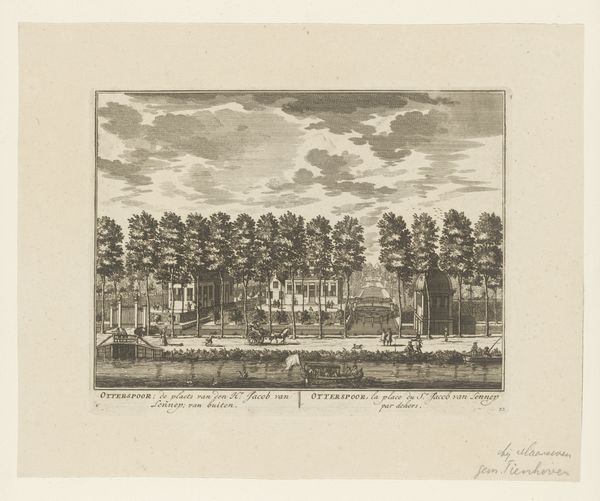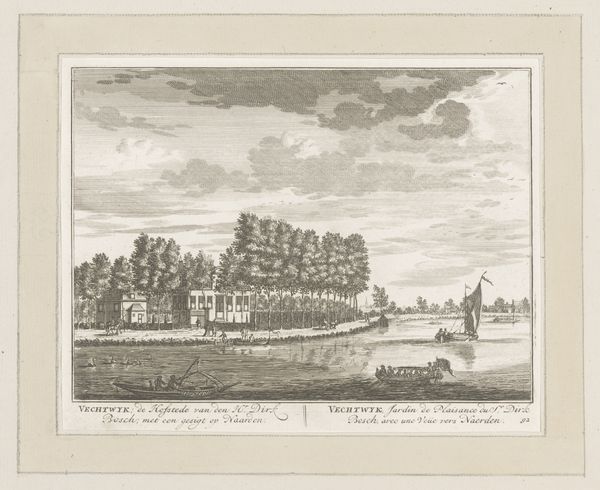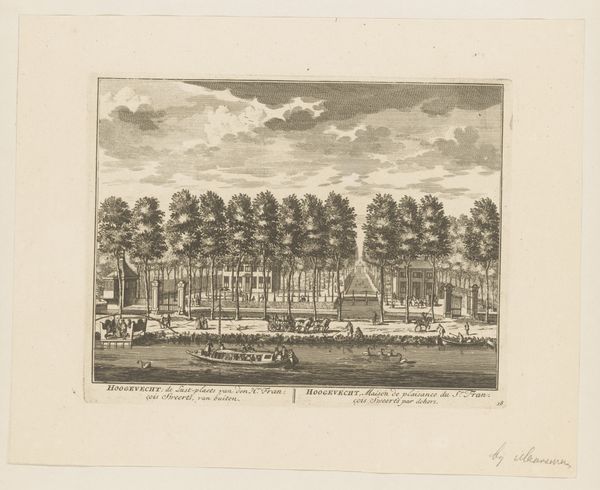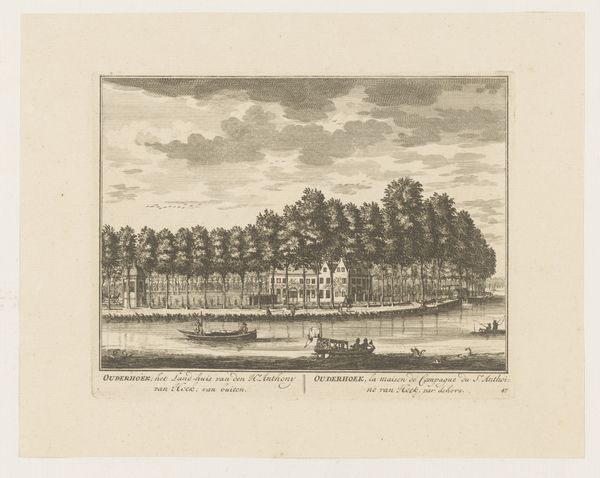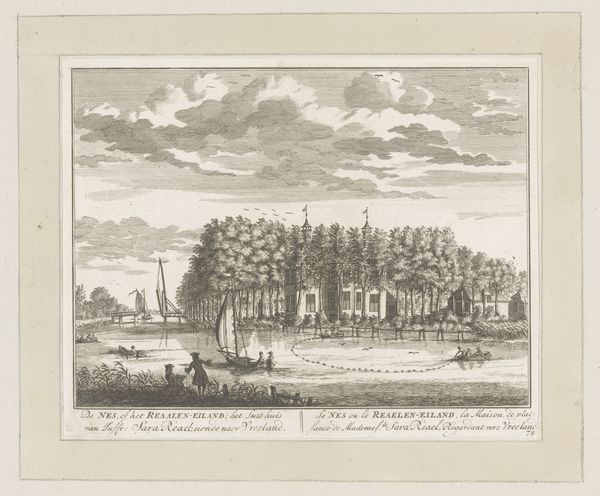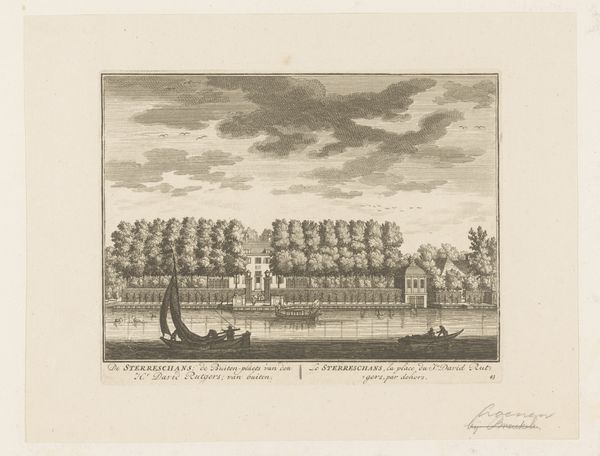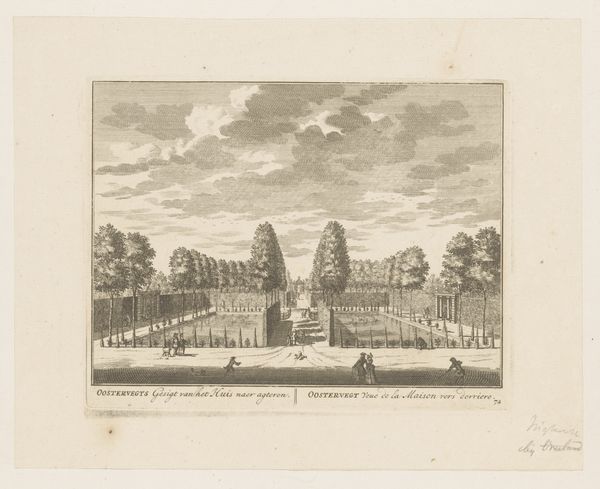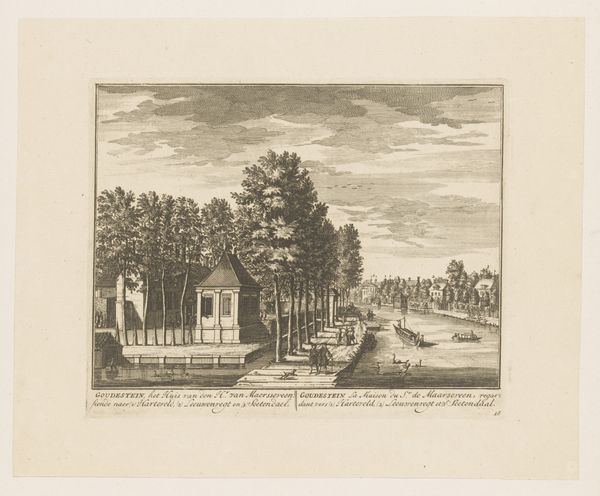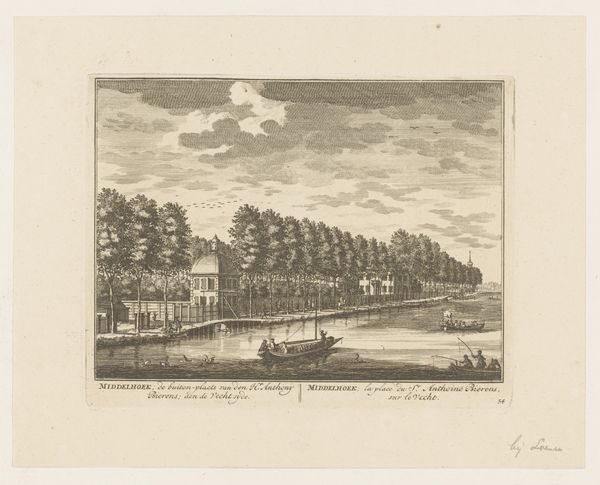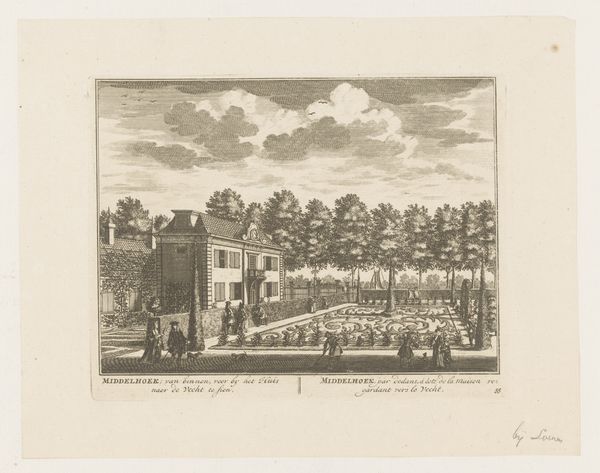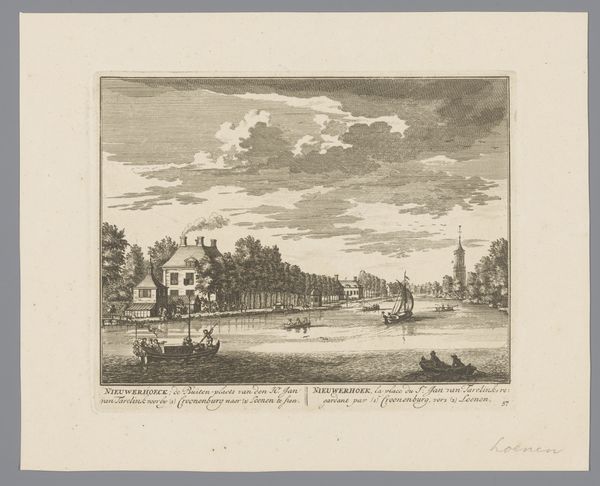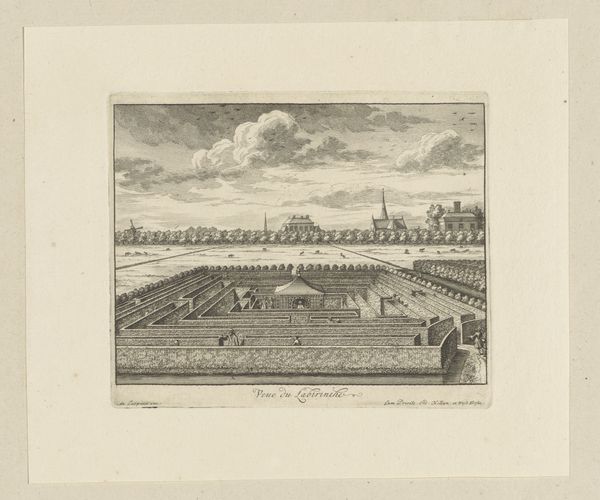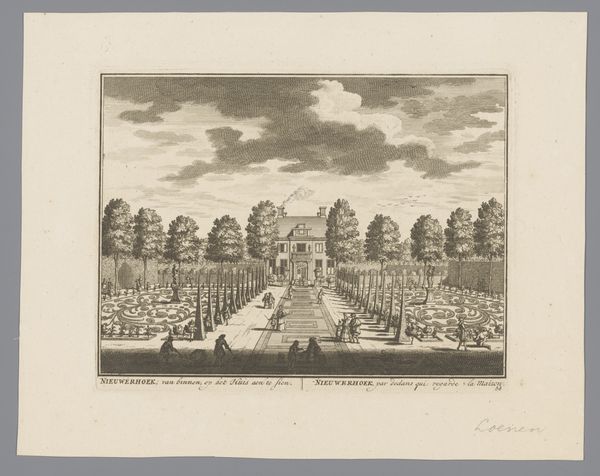
print, etching
#
dutch-golden-age
# print
#
etching
#
landscape
#
river
#
etching
#
cityscape
Dimensions: height 160 mm, width 206 mm
Copyright: Rijks Museum: Open Domain
Curator: Examining Stopendaal's "Huis Wallestein van over de Vecht gezien" from 1719, the emphasis on the etching process itself becomes quite prominent. The crisp lines, the layering, and the almost diagrammatic approach to rendering the landscape reveal a specific mode of production. What strikes you about the materiality of this work? Editor: Well, knowing it's an etching really changes how I see it. The detail is incredible, but it's also very... controlled? I initially saw it as just a nice landscape, but now I'm thinking about how it was actually made. Curator: Exactly. Think about the societal function of prints like this in the 18th century. It's not just a landscape, but a representation of power, property, and leisure consumed by a certain class. Consider the labor involved – the etcher's skill, the materials themselves, the distribution networks… it all speaks to the economic landscape of the time. Does that change your perspective? Editor: It does. The etching allowed for multiples, which meant more people could “own” this view of Wallestein, or at least a version of it. Is it then less about art and more about accessibility through reproduction? Curator: It challenges the art/craft binary, doesn’t it? We need to consider the consumption and circulation of images in this period. How does the act of reproducing an image, democratizing its access, alter its inherent value or purpose? What did it mean for a growing merchant class to see and almost “possess” these estates through prints? Editor: So it's not just about the beautiful landscape, it's about who could afford to enjoy that landscape, and who could afford to own its image. I hadn't thought about the class aspect so directly before. Curator: Precisely! Looking at art through the lens of production, materiality and consumption makes us more aware of its complex connections to broader social structures. Editor: It's definitely given me a new way to look at prints, and art in general. It’s all tied into the material conditions of the time. Thanks!
Comments
No comments
Be the first to comment and join the conversation on the ultimate creative platform.
